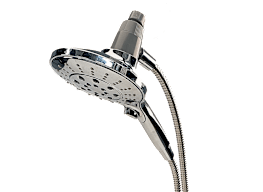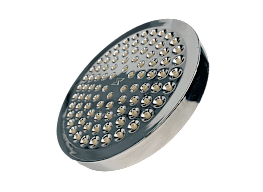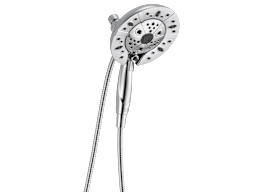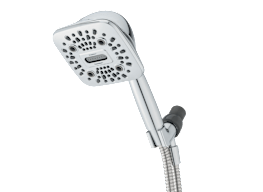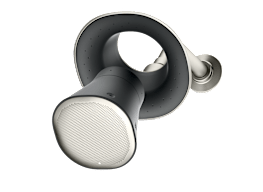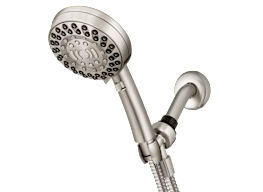Best Showerheads of 2023
Take a great shower, while saving water and money, with one of these top-rated showerheads
When you shop through retailer links on our site, we may earn affiliate commissions. 100% of the fees we collect are used to support our nonprofit mission. Learn more.

If you’ve ever struggled to feel clean and refreshed under a slow trickle of lukewarm water, you’re not alone. Since 1994, federal law has dictated that showerheads must limit flow to a maximum of 2.5 gallons per minute (gpm). Some states have adopted maximums of 2.0 gpm, which aligns with the Environmental Protection Agency’s WaterSense standard; for others, that maximum may be as little as 1.8 gpm minute. That’s great for saving water, but perhaps not so great if you’re looking for a shower with powerful water pressure.
Fortunately, showerheads have improved in recent years. Consumer Reports’ latest lab tests have found that the modern-day water-saving showerhead is no longer synonymous with a crummy shower. In fact, a few of the 13 popular multisetting and single-setting models we test use even less water than what the law allows while still providing a powerful shower that leaves you feeling recharged, as opposed to just passably clean.
Skip Ahead
• Best Showerheads: Multisetting and Single-Setting
• How CR Tests Showerheads
• How We Picked the Best Showerheads
Scroll down for ratings and reviews of the best multisetting and single-setting showerheads, based on our lab tests of more than 10 models. For more options, check out our full showerhead ratings, and consult our showerhead buying guide to learn more about the different types of showerheads we test.
Best Multisetting Showerheads
Multisetting showerheads typically offer three to eight patterns, ranging from a concentrated stream to a rainfall-like spray. Most are controlled by a rotating dial on the showerhead itself, but some have a remote control.
Best Single-Setting Showerheads
You have just one shower mode with these models—typically a wide crowd-pleasing spray emitted with decent pressure. That said, only one showerhead in this group earns a high enough rating overall for us to recommend it.
How CR Tests Showerheads
Our showerhead tests include a mix of lab measurements and feedback from four panelists. We install every showerhead our Yonkers, N.Y., headquarters’ fitness center and ask our panelists to shower with each one according to their preferred settings. They then score each model based on the overall feel of the shower, using a five-point scale.
We also measure the volume of water usage and tabulate water consumption on a per-minute basis. On each product page we post both the claimed and actual amount of water used by each showerhead—as you’ll see, the two figures can vary considerably. Next, we install each showerhead in our labs at a set height, then measure the drop in temperature as water falls from the showerhead to a container near the height of a typical user’s back. Finally, our engineer assesses how easy it is to switch spray settings or to pause water flow—the latter is handy if you’re aiming to save even more water while lathering up.
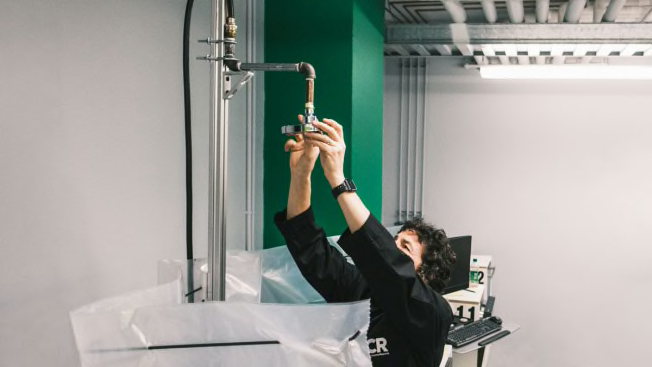
Photo: Stephen Yang Photo: Stephen Yang
How We Picked the Best Showerheads
Our top performers have the following in common.
- They exude a terrific spray. The best showerheads in our ratings receive strong marks for how the spray felt to our evaluators. We look for aspects that most people would find appealing: robust pressure, satisfying water-droplet size, and good coverage. Our favorites often feature at least four settings, from a rainfall-style deluge to a more-targeted stream, enabling users to adjust the feel to their needs.
- The water emerges from the nozzle hot and stays hot. A common problem with modern-day low-flow showerheads is that they produce a lukewarm spray. Our picks generate large droplets, which, in turn, lose less heat as they fall, so you don’t need to crank up the hot water to have a satisfying shower. The top scorers keep water a full 10° F warmer than the worst scorers, which translates to a savings in both energy and money.
- They save more water than most. The recommended showerheads often use significantly less water than the 2.5-gallon-per-minute maximum set by federal law, without sacrificing spray quality. In fact, a few top scorers use as little as 1.8 gpm. That’s a savings of 7 gallons of water for every 10-minute shower you take.
- They’re a breeze to maneuver. Intuitive, easy-to-use dials, knobs, or buttons make it a cinch to switch spray settings, or even stop water flow while you’re soaping up, to save more water.

















